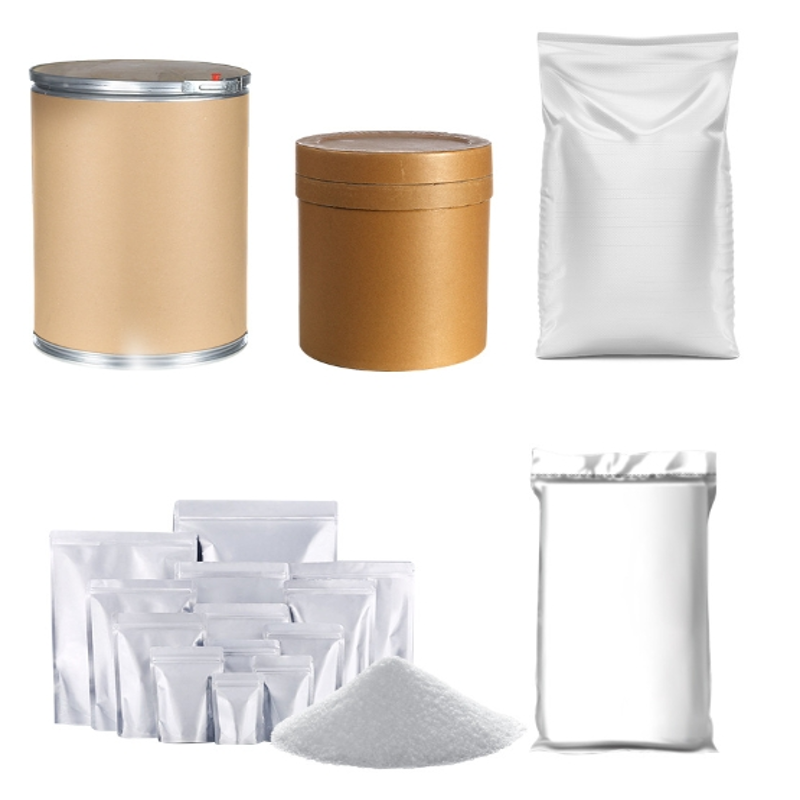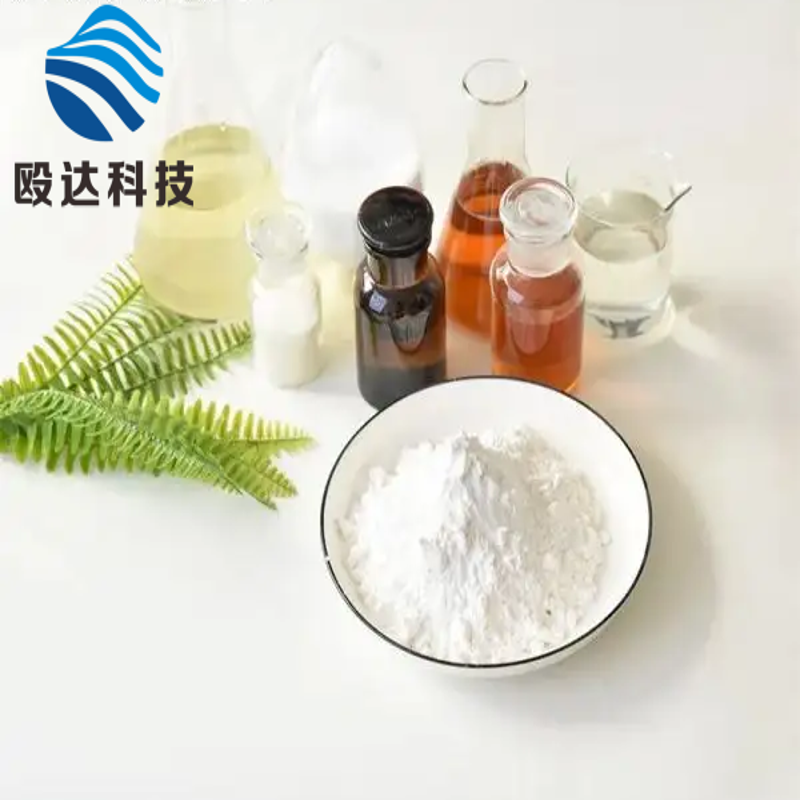-
Categories
-
Pharmaceutical Intermediates
-
Active Pharmaceutical Ingredients
-
Food Additives
- Industrial Coatings
- Agrochemicals
- Dyes and Pigments
- Surfactant
- Flavors and Fragrances
- Chemical Reagents
- Catalyst and Auxiliary
- Natural Products
- Inorganic Chemistry
-
Organic Chemistry
-
Biochemical Engineering
- Analytical Chemistry
- Cosmetic Ingredient
-
Pharmaceutical Intermediates
Promotion
ECHEMI Mall
Wholesale
Weekly Price
Exhibition
News
-
Trade Service
The efficacy of second-generation androgen receptors in non-metastatic prostate cancer is unclear
.
Recently, a meta-analysis showed that castration combined with abiraterone significantly improved metastasis-free survival (MFS) and overall survival (OS) in high-risk non-metastatic prostate cancer
.
The findings were published online today in the journal Lancet
.
The role of ADT combined with second-generation androgen receptors in non-metastatic prostate cancer still needs to be explored.
3-year androgen deprivation therapy (ADT) and local radiotherapy are the main treatment options for non-metastatic prostate cancer with high-risk characteristics
.
ADT in combination with docetaxel or a second-generation androgen receptor antagonist (abiraterone, enzalutamide, or apalutamide) improves prognosis in metastatic prostate cancer
.
However, to date, no studies have demonstrated that these drugs confer a clear and sustained survival benefit in non-metastatic prostate cancer initiating long-term ADT therapy
.
Abiraterone is a selective irreversible CYP17 enzyme inhibitor
.
Co-administration with prednisone reduces mineralocorticoid excess adverse events
.
This study presents a pooled analysis of the most recent data from the Phase III STAMPEDE study
.
Methods This open-label phase III study was conducted in 113 locations in the UK and Switzerland
.
Eligible patients (no age limit) had high-risk features (defined as node-positive, or if node-negative, at least two of the following: tumor stage T3 or T4, Gleason score 8-10, prostate-specific antigen [PSA] Concentration ≥40 ng/mL) or have high-risk features for recurrence (total ADT therapy ≤12 months, no treatment at ≥12-month interval, and PSA concentration ≥4 ng/mL, PSA doubling time <6 months, or PSA concentration ≥ 20 ng/mL, or lymph node recurrence), with a WHO performance status of 0-2
.
Lymph node-negative patients must receive local radiotherapy, and node-positive patients are encouraged to receive local radiotherapy
.
In the first study (Study 1), patients were randomly assigned to receive ADT (control group) (which may include surgery and luteinizing hormone-releasing hormone agonists and antagonists), or ADT plus oral abiraterone acetate (1000 mg/day) ) + oral prednisone (5mg/day) (combination therapy group)
.
In the second study (Study 2), enzalutamide (160 mg/day orally) was added to the combination arm
.
ADT was given for 3 years and combination therapy was given for 2 years
.
This study performed a meta-analysis of these two studies with the primary endpoint of MFS
.
Secondary endpoints include OS, prostate cancer-specific survival, biochemical failure-free survival, and progression-free survival (PFS)
.
Main results: Between November 15, 2011, and March 31, 2016, 1974 patients were randomly assigned and treated
.
There were 455 and 459 patients in the control and combination groups in Study 1, and 533 and 527 in the control and combination groups, respectively, in Study 2 (combination therapy followed by enzalutamide)
.
Figure 1.
Trial flow chart The baseline characteristics of patients are shown in Table 1, and the random groups are balanced and comparable
.
Median age 68 years, median PSA 34 ng/ml, 39% (774/1974) patients had positive lymph nodes, 79% (1563/1968) patients had Gleason score 8-10, abiraterone group and abiraterone The median follow-up time in the Long+enzalutamide group was 72 months and 85 months, respectively
.
There were 306 and 180 metastasis-free survival events in the control and combination groups, respectively
.
Compared with the control group, the metastasis-free survival of the combined treatment group was significantly prolonged (HR=0.
53, P<0.
0001)
.
The 6-year metastasis-free survival rates for the combination and control groups were 82% and 69%, respectively (Figure 2)
.
Subgroup analyses included 294 patients from Study 1 and 192 patients with metastasis-free survival events from Study 2
.
The study showed no difference in efficacy between the combination treatment groups (Study 1 [HR=0.
54, P<0.
0001]; Study 2 [HR=0.
53, P<0.
0001]) (interaction HR=1.
02, P=0.
91), nor between the two studies Significant heterogeneity (P=0.
90)
.
Figure 2 Analysis of metastasis-free survival WHO score and NSAIDs or aspirin can significantly affect efficacy (Figure 3) Figure 3 Baseline characteristics that affect patients' metastasis-free survival Compared with the control group, the median OS of the combination group was significantly higher Excellent (HR=0.
60, P<0.
0001), the 6-year OS rates of the control group and the combined group were 77% and 86%, respectively
.
In prespecified subgroup analyses, there were 237 and 146 deaths in Study 1 and Study 2, respectively
.
The combined treatment group had obvious curative effect (HR=0.
63, P=0.
0005 in Study 1; HR=0.
54, P=0.
0004 in Study 2), and there was no significant heterogeneity between the two study groups (P=0.
51) (Figure 4)
.
Figure 4 OS analysis Compared with the control group, the prostate cancer-specific survival time of the combination treatment group was significantly prolonged (not reached) (HR=0.
49, P<0.
0001), and the 6-year prostate cancer-specific survival of the combination group and control group The rates were 93% and 85%, respectively (Fig.
5); PFS was also significantly prolonged in the combined treatment group compared with the control group (none were achieved) (HR=0.
44, P<0.
0001)
.
Figure 5 Prostate cancer-specific survival and PFS analysis table Safety analysis Conclusion Compared with ADT alone, ADT combination therapy can significantly improve MFS and OS in high-risk non-metastatic prostate cancer patients
.
A 2-year combination of abiraterone and prednisone may be considered a standard treatment for high-risk nonmetastatic prostate cancer
.
Reference: Abiraterone acetate and prednisolone with or without enzalutamide for high-risk non-metastatic prostate cancer: a meta-analysis of primary results from two randomised controlled phase 3 trials of the STAMPEDE platform protocol .
Published online December 23, 2021 https:/ /doi.
org/10.
1016/S0140-6736(21)02437-5







